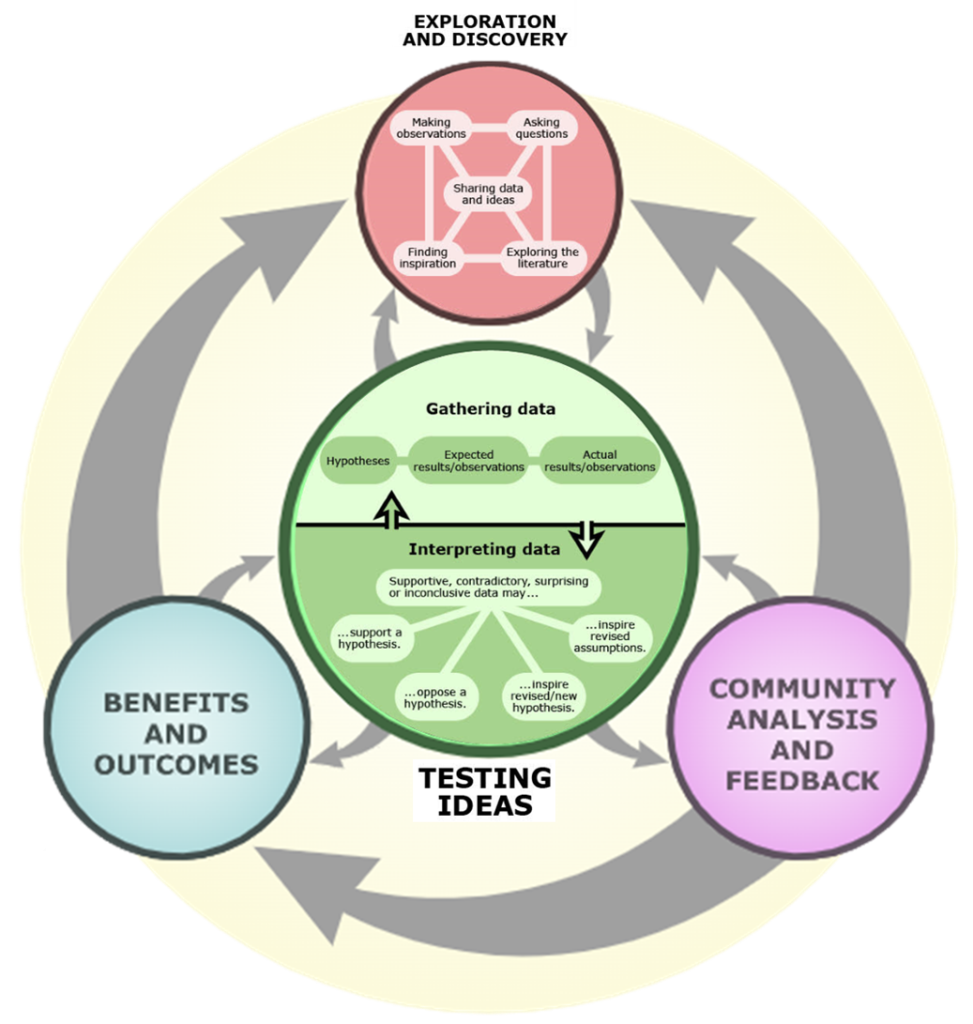1.2 Nature of Science Overview
Science is a fact-based way of understanding natural phenomena. Science is really two things: (1) a collection of facts that have been established through observation or experimentation; and (2) a process for advancing knowledge about the natural world. We’ll discuss both established facts and science as a process in this text, but our emphasis will be on science as a process.

The process of science
Science as a process begins by observing something, being curious, and asking a question. Observations can be based on personal experiences and thoughts or when we learn information that is new to us, but already available. Questions flow from the observation. For example, you might have noticed turkeys around the Twin Cities campus. You observe that male turkeys often raise their tail into the shape of a fan while females usually do not. This could lead you to ask some questions like, “What is the purpose of a male turkey fanning its tail?”, “Do female turkeys fan their tails?” “If not, why not?”
*For more on turkeys at the UMN-Twin Cities campus check out this article or their own Instagram account @turkeysofumn
A hypothesis is a proposed explanation for some sort of natural phenomenon (such as male masturbation, female orgasm, or same-sex sexual preferences). A well-written hypothesis should:
- answer the question being asked,
- provide an explanation about why the observation occurred,
- be testable,
- and can be wrong.
By definition, a hypothesis sets the stage for further exploration, either through more observations or experimentation.
Check Yourself
Content on this page was originally published in The Evolution and Biology of Sex by Sehoya Cotner & Deena Wassenberg and has been expanded and updated by Katherine Furniss & Sarah Hammarlund in compliance with the original CC-BY-NC 4.0 license.
- © University of California Museum of Paleontology, Understanding Science, www.understandingscience.org ↵

